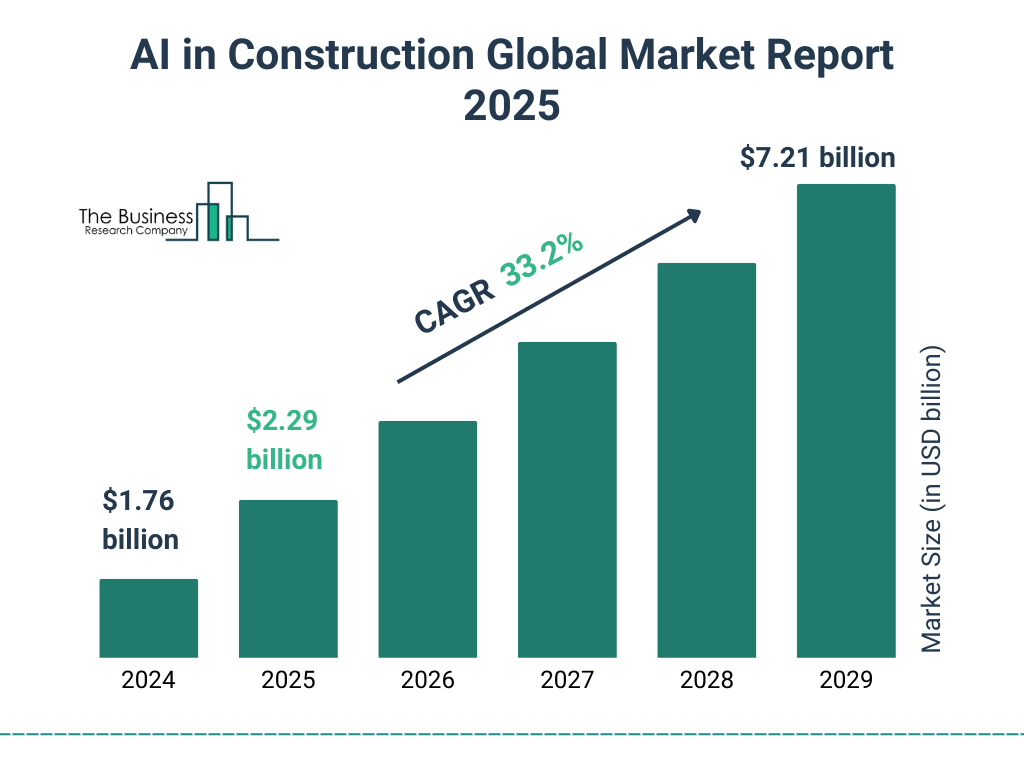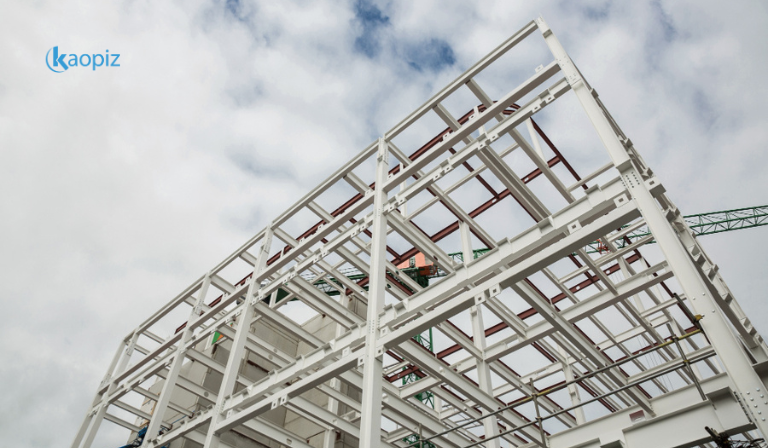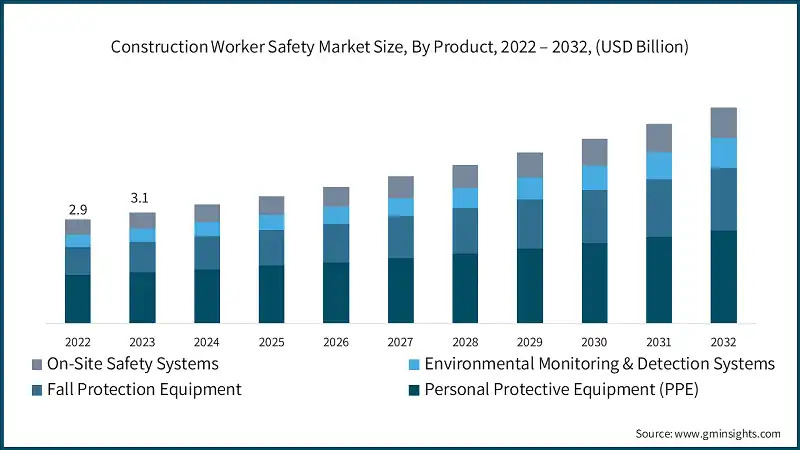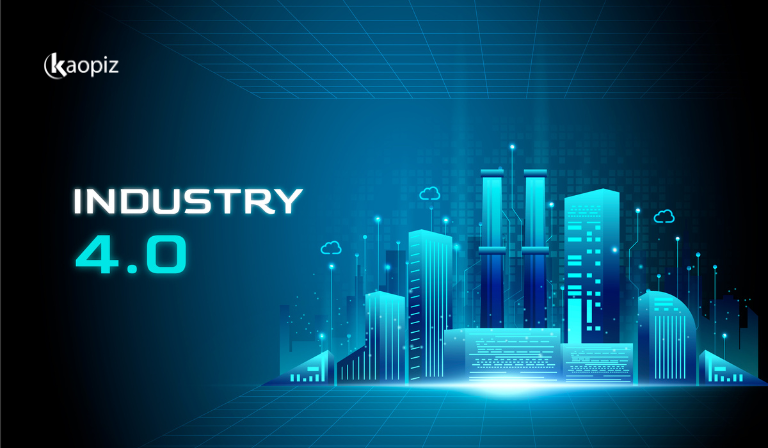Top 10 Construction Industry Trends to Watch in 2025
The construction industry is undergoing a massive transformation in 2025, driven by rapid technological advancement, growing sustainability demands, and shifting workforce dynamics. From AI-powered automation to modular building methods and smart construction sites, companies are rethinking how they design, build, and deliver projects.
In this blog, we explore the top 10 construction industry trends in 2025 and beyond—from digital disruption to green building—and how forward-thinking companies are adapting. Whether you’re a contractor, developer, or tech provider, these trends will shape the future of construction.
Table of Contents
- How Big is the Construction Industry?
-
Top 10 Construction Industry Trends [2025 and beyond]
- AI, Automation & Robotics
- Sustainability and Green Building
- Smart Construction Sites
- Labor Shortages and Upskilling
- Modular and Prefabricated Construction
- Construction Management Software
- Construction Worker Safety
- Virtual and Augmented Reality
- Building Information Modeling (BIM)
- Construction Tech Investments
- How Kaopiz Supports Digital Innovation in Construction
- Conclusion
- FAQs
How Big is the Construction Industry?
The construction industry remains one of the world’s most vital and expansive sectors. According to Market Research Future, in 2024, the global construction market was valued at approximately $9.06 trillion, and it’s projected to reach $9.51 trillion in 2025.
Looking further ahead, the market is expected to grow to $14.76 trillion by 2034, at a compound annual growth rate (CAGR) of 5.00% over the forecast period.
This growth is primarily driven by the increasing global population and rapid urbanization, both of which are fueling demand for new housing, schools, hospitals, transportation infrastructure, and energy-efficient commercial buildings.
Consequently, as nations invest in modernization and smart city development, the construction sector is rapidly evolving. Thus, it is increasingly adopting digital technologies, sustainable practices, and innovative building methods to keep pace with these changing demands.
Top 10 Construction Industry Trends [2025 and beyond]
Now, let’s take a closer look at the top 10 construction industry trends shaping 2025 and beyond. From cutting-edge technologies to evolving workforce dynamics and growing sustainability demands, these trends are redefining how the industry operates.
AI, Automation & Robotics
In 2025, automation, robotics, and AI trends will transform construction by tackling labor shortages, improving safety, and increasing efficiency. The AI in the construction market is projected to grow from $2.29 billion in 2025 to $7.21 billion by 2029 (CAGR 33.2%), while the construction robotics market is expected to reach $8.0 billion by 2033.

Key applications include:
AI can cut project costs by 10–20% and engineering hours by up to 30%, while automation can reduce rework by 30% and improve build quality. Robotics adoption is rising across tasks, with 70% of equipment makers offering robotic solutions.
Therefore, these tools are becoming trends in the construction industry and are essential to safer, faster, and more cost-effective construction.
Sustainability and Green Building
Sustainability has become one of the key trends in construction industry in 2025, driven by regulations, client demand, and growing environmental awareness. As a result, the sustainable construction materials market is projected to reach $512.39 billion by 2029, growing at a CAGR of 12.2%.

Nearly 50% of industry professionals expect most of their projects to be sustainable by year-end, while 90% agree that the shift toward green practices is accelerating.
Key developments include:
Though green features were once seen as a luxury, they are quickly becoming standard as sustainable practices prove their long-term value for the environment and for business.
Smart Construction Sites
In 2025, smart construction sites are one of the emerging trends in construction industry, leveraging connected technologies to boost efficiency, safety, and real-time decision-making.
Equipped with IoT sensors, drones, and AI-powered cameras, these sites can monitor equipment usage, track worker locations, and detect potential hazards instantly. Wearables and mobile devices also enable better communication and site coordination.

These technologies enable:
As connectivity and data analytics continue to advance, smart job sites are increasingly helping companies reduce risk, enhance productivity, and ultimately deliver projects more efficiently.
Labor Shortages and Upskilling
In 2025, the construction industry continues to face a severe labor shortage, with an estimated 501,000 additional workers needed in 2024 alone. Nearly 89% of construction firms report difficulty filling roles, and over 60% cite delays due to staffing gaps.
The issue is driven by an aging workforce, limited interest among younger generations, and rising wage pressures. With nearly 25% of workers over 55, the challenge isn’t just replacing headcount—it’s replacing decades of experience.
To respond, the industry is:
As automation grows, the demand for tech-savvy, skilled workers is rising—not just to build, but to manage the systems driving construction forward.
Modular and Prefabricated Construction
Prefabrication and modular construction are digital trends in construction industry, with the market projected to reach $189.1 billion by 2032, growing at a CAGR of 6.9% from 2025. Driven by labor shortages, faster project demands, and sustainability goals, modular methods are gaining traction across residential, commercial, and institutional projects.

Key benefits include:
Governments are backing the shift, like Colorado’s $24 million investment in modular housing in late 2024, while major firms like Bouygues, Skanska, and Lendlease continue to invest in this efficient, scalable construction model.
Construction Management Software
The demand for construction management software (CMS) is surging, with the global market projected to reach $24.12 billion by 2032, growing at a CAGR of 10.41%. In particular, the Asia-Pacific region is leading growth, driven by large-scale infrastructure projects in countries like China and India.
Key trends shaping the CMS market in 2025:
With the shift to digital workflows, CMS platforms are becoming essential construction industry trends for managing budgets, timelines, resources, and teams, transforming how modern construction projects are delivered.
Construction Worker Safety
In 2023, the construction industry recorded 1,075 fatalities—the highest since 2011—with falls accounting for over 39%. With a fatal injury rate of 9.6 per 100,000 workers, the need for advanced safety measures is more urgent than ever.
The construction worker safety market was valued at $3.1 billion in 2023 and is expected to grow at a 7%+ CAGR through 2032, fueled by rising investments in safety technologies.

Key innovations driving safer job sites include:
These tools not only reduce accidents but also boost productivity, compliance, and worker morale, making safety a strategic investment, not just a regulatory requirement.
Virtual and Augmented Reality
Virtual, augmented, and mixed reality (VR/AR/MR) are new trends in construction industry, transforming the sector by making job sites more accessible, collaborative, and efficient. These technologies allow for virtual walkthroughs, enabling stakeholders to explore projects remotely in real time, improving communication and decision-making.
The AR & VR market is projected to reach $40.4 billion in 2024, with a CAGR of 8.97%, expected to hit $62.0 billion by 2029 (Statista). In construction, AR integration has been shown to reduce errors by up to 90% and boost efficiency by 30%.

Key applications include:
As construction becomes more complex and client expectations rise, VR and AR are proving to be essential tools for delivering smarter, safer, and more collaborative projects.
Building Information Modeling (BIM)
Among the most transformative construction industry trends, Building Information Modeling (BIM) is reshaping how projects are designed, planned, and executed. Specifically, by creating a centralized, data-rich 3D model, BIM significantly improves collaboration and enhances accuracy. It also boosts efficiency across all phases of a construction project.
The global BIM market is projected to grow from $9.93 billion in 2025 to $19.04 billion by 2030, at a CAGR of 13.9%. Government mandates are accelerating adoption—over 50% of public infrastructure projects required BIM in 2023, particularly in Europe, North America, China, and Japan.
Key benefits include:
BIM also plays a growing role in smart city development. It is enabling better urban planning and infrastructure management through real-time data and digital coordination.
Construction Tech Investments
One of the recent trends in construction industry is tech investment, as firms seek to improve productivity, reduce costs, and meet sustainability goals. In recent years, venture capital funding in construction tech has surged, focusing on AI, robotics, modular building, and project management platforms.

Key areas attracting funding include:
Major construction firms and tech giants are also investing heavily in R&D, partnerships, and pilot programs to stay competitive. The sector’s shift toward data-driven, automated, and remote-enabled workflows is transforming how construction is financed, managed, and delivered.
How Kaopiz Supports Digital Innovation in Construction
As construction companies race to adopt emerging technologies, Kaopiz serves as a trusted partner in driving digital transformation across the industry. With deep expertise in software development, cloud integration, and AI-powered solutions, we help construction firms streamline operations, enhance collaboration, and reduce costs. In doing so, we help them stay competitive and agile in a rapidly evolving landscape.

Here’s how Kaopiz delivers value to construction clients:
From digitizing site operations to enabling smarter, data-driven construction processes, Kaopiz empowers companies to build faster, safer, and more efficiently, while future-proofing their business.
Conclusion
To sum up, the construction industry in 2025 is rapidly evolving. It is driven by digital transformation, sustainability goals, labor challenges, and rising global infrastructure demands. From AI and robotics to modular building, BIM, and AR/VR, the top construction industry trends shaping the sector are not just about innovation—they’re about survival, efficiency, and long-term growth.
Therefore, firms that embrace these changes are gaining a competitive edge through faster delivery, smarter planning, safer worksites, and reduced costs.
At Kaopiz, we’re proud to support construction companies in adopting the tools and technologies needed to thrive in this new era. Whether you’re exploring automation, modernizing workflows, or building smart, sustainable infrastructure, we’re here to help you build the future.
FAQs
Which Software Solutions Are Construction Companies Looking for in 2025?
In 2025, construction firms will prioritize software for project management, BIM integration, AI-driven analytics, modular construction planning, IoT-based site monitoring, and mobile field apps to enhance real-time collaboration and productivity.
How Can Kaopiz Help Construction Companies Digitize Operations?
Kaopiz offers custom software development, AI integration, cloud migration, and smart construction tools that streamline workflows, improve safety, and optimize resource planning—empowering firms to build faster, smarter, and more cost-effectively.
What Features Do Construction Firms Value Most in Digital Tools?
Key features include real-time data access, mobile compatibility, automated reporting, integration with existing systems, and scalable cloud infrastructure. Construction firms also value tools that enhance safety monitoring, project visibility, and budget control.




















